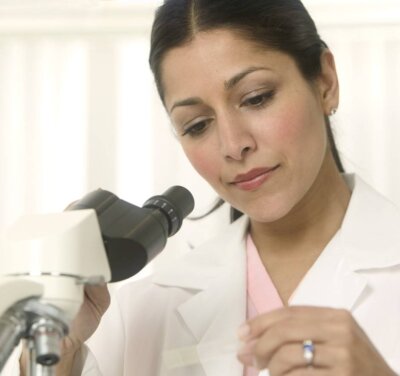
In cases of disease, injury or invasive infection – resulting in physical change to an animal’s tissues or organs, diagnosis might still be more quickly and conclusively obtained by veterinary microscopy, even when a diagnostic test might be available.
Microscopic examination may take the form of inspecting a tissue preparation for abnormal cells or the changes often associated with various cancers. Alternatively, diagnosis may depend on observing the presence of invasive organisms such as bacterial, fungal, protozoan or multicellular parasites.
Microscopic examination
Sampling for microscopy depends on the type of sample required and from where on, or in, the animal it’s collected. Scrapings and swabbings from surface tissues and body cavities are obviously the easiest to collect, with blood samples probably the next and most routine.
Fine needle aspirate (FNA) samples might be taken from subcutaneous tissues as may needle core biopsies, where only small scale samples are required. Larger samples may require an excision of tissue under anaesthetic from a living animal, or from post mortem material.
Preventing the sample becoming distorted
The first stage of microscopic examination is fixing and clearing the sample to halt further degradation and prevent the development in the sample of distortions that might adversely affect the diagnosis. Next, the sample must be transferred and bound to a suitable substrate, usually a glass slide, and protected with a further, thinner slide or coverslip.
Generally, the sample is required to be no more than one cell thick between the slide and the coverslip, and there are various ways of achieving this; from crude squashes, through various smearing techniques to accurate mechanical slicing using a sharp-bladed, histological microtome. Visualising cellular anomalies or foreign invaders can be enhanced by a combination of chemical stains with different affinities for the different tissue and cell structures.
Veterinary microscopes
Now the sample is ready for transfer to the instrument itself. A binocular veterinary microscope offering a range of magnification options, variable illumination, strain-free optics with smooth mechanical movement makes examination straightforward and easy on the eyes. A built-in photographic facility means that results can be preserved and shared with ease.
With pre-prepared microscope stains and consumables, affordable and easy to use veterinary microscopes, diagnostic microscopy remains an essential investigative tool in the veterinary laboratory.

